Pero Vaz de Siqueira
Merchant and shipowner on oriental routes
This is an edited translation of an article published in https://1library.org/document/z3no6wmq-pero-vaz-siqueira-mercador-armador-nas-rotas-orientais.htm
Leonor Diaz de Seabra, PhD | | Maria de Deus Manso, PhD |
| University of Macau | | University of Évora |
1. Introduction
Macau became known in history as the most ancient western settlement in Chinese territory, from the middle of the 16th century to the end 20th century, and was considered a free, economical and cultural port in China.
The Portuguese established themselves in Macau in the 16th century. At that time China had closed even more of her entry ports and terminated all external relations. The Portuguese profited from their settlement in Macau during their discoveries and expansions in the Orient, transforming it into an important centre of commerce of the Maritime Silk Road during the 16th and 17th centuries, uniting Macau to Korea in the North; to Mexico and the American continent via Manila; in the Orient to Siam, Cambodia,
Malacca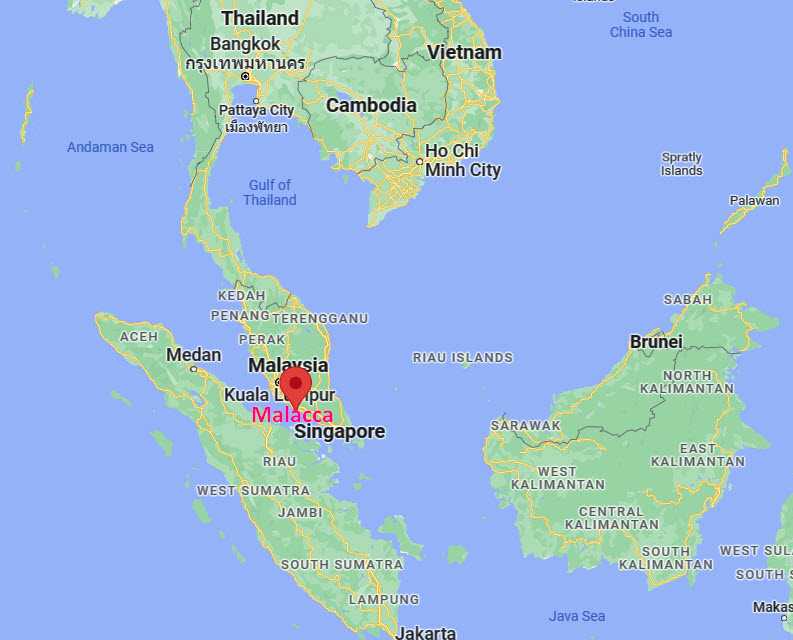 ,
Makassar
,
Makassar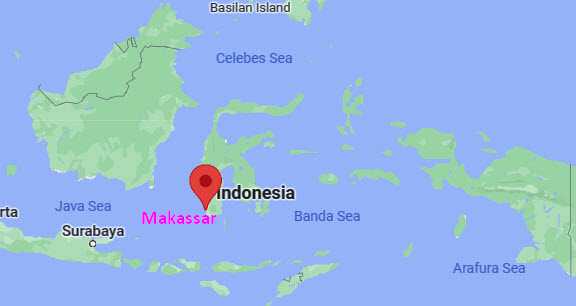 The capital of the Indonesian province of South Sulawesi,
Flores
The capital of the Indonesian province of South Sulawesi,
Flores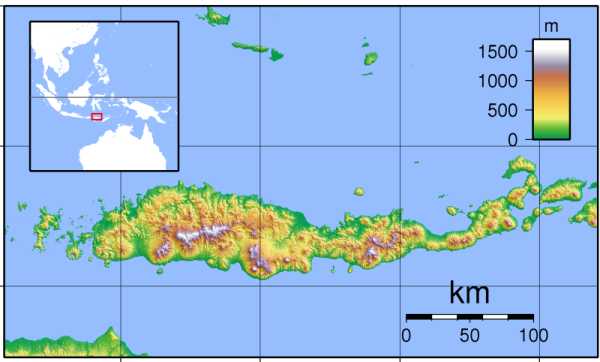 A group of islands in Indonesia,
SolorA group of islands in Indonesia
A group of islands in Indonesia,
SolorA group of islands in Indonesia 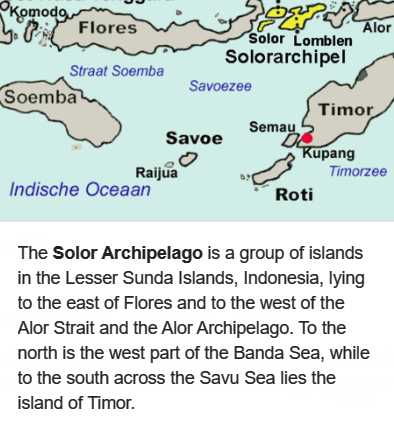 and
Timor
and
Timor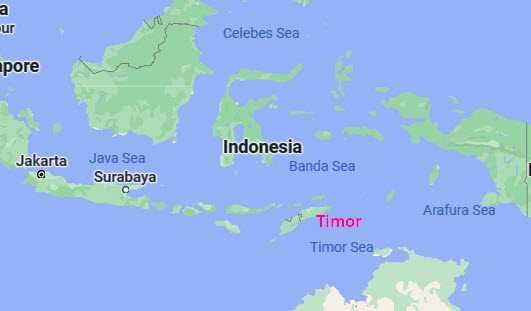 , in the south and, via
Goa
, in the south and, via
Goa , to Africa and Europe; and from Europe to the eastern coast of Central and South America including Brazil. It was through all these links that a global maritime commerce began to take shape in what could be considered the first step to globalisation.
, to Africa and Europe; and from Europe to the eastern coast of Central and South America including Brazil. It was through all these links that a global maritime commerce began to take shape in what could be considered the first step to globalisation.
The importance of Macau in the Portuguese maritime empire that extended from Africa and the eastern half of the Indian Ocean to the Spice Islands, and from the coast of China to Japan, together with the vigour of commercial activities (and in some cases missionary ventures) of the Portuguese in places like Cambodia, Patane, Siam, Sunda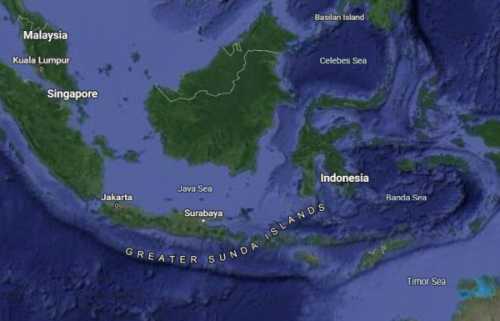 , Borneo, Timor,
Tidore
, Borneo, Timor,
Tidore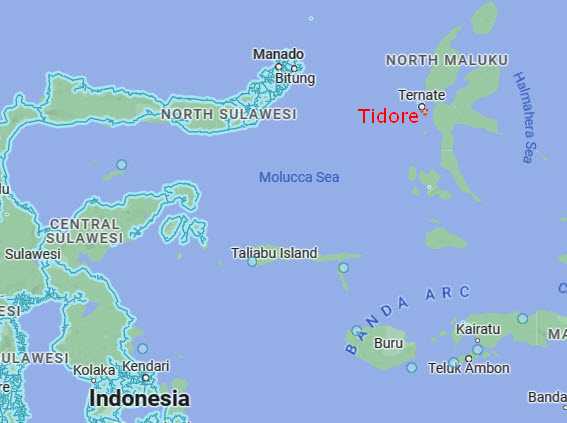 and Solor, and in fortresses and trading posts from Goa to Malacca, as well as the splendour of the city of Macau in its early days, endured till the 17th century1.
and Solor, and in fortresses and trading posts from Goa to Malacca, as well as the splendour of the city of Macau in its early days, endured till the 17th century1.
During the last decades of the 16th century Macau, together with Malacca, became the most important destinations and commercial posts for exotic and tropical products such as pepper, cloves, nutmeg, incense, silk and silver. The voyages went from Bengal,
Martaban(Mottama) A town in Western Burma (Myanmar).,
TenassarimAn island in southern Burma (Myanmar) to Cambodia, Sunda, Borneo, Solor and Timor, etc., all yielding thousands of
cruzados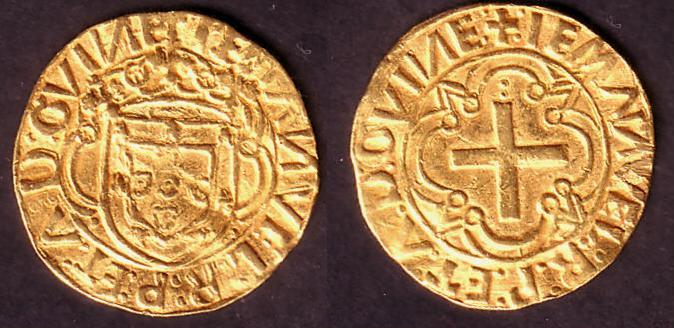 Por JFVP - Obra do próprio, CC BY-SA 3.0, https://commons.wikimedia.org/w/index.php?curid=5331671 Medieval Portuguese gold or silver coins with a cross on the reverse side annually to the Portuguese Crown in Macau. To that we need to add the complimentary voyages to Siam ordered by Portugal in the 1580s that brought the merchandise of Siam, from
AyuthiaThe name of a Thai State and also of its capital city. to Japan via Malacca.
Por JFVP - Obra do próprio, CC BY-SA 3.0, https://commons.wikimedia.org/w/index.php?curid=5331671 Medieval Portuguese gold or silver coins with a cross on the reverse side annually to the Portuguese Crown in Macau. To that we need to add the complimentary voyages to Siam ordered by Portugal in the 1580s that brought the merchandise of Siam, from
AyuthiaThe name of a Thai State and also of its capital city. to Japan via Malacca.
The Portuguese trade in Japan in the middle of the 16th century coincided with the discovery of large deposits of silver and gold in that country. At the end of the 16th century, the supply of raw silk and gold in exchange for silver dominated this trade. In the 1630s exports of gold were less significant than those of silk2.
Portuguese merchants started the supply of products from China to Japan in the 1540s. In the following decade, Portugal emerged as the key intermediary ln trade between China and Japan (and Siam-Japan), especially at the time when China banned all direct contact with the Japanese merchants following the activity of the wako (Japanese pirates) off the coast of Fujian. Until 1639 — when the
Bakufu ("shadow government" or military dictatorship established by
Tokugawa Ieyasu in 1603) promulgated the Christian Expulsion EdictThe edict banned the practice of Christianity and led to the expulsion of all foreign missionaries. that confirmed the end of the Portuguese trade in Japan — the population of Macau as well as the Crown, greatly prospered with this trade.
At the commencement of the 17th century, the privileged trade position of the Portuguese was seriously threatened by the arrival of the British and Dutch and, on a smaller scale, by the Spanish. At the commencement of 1599, that is, forty-five years after the settlement of Macau, Dutch ships started to appear along its coastal waters. The Dutch wanted to capture Macau, Malacca and Nagasaki and to intercept the highly profitable silver trade3.
Macau was, essentially, a commercial entity, but its situation in the economic cycle and political sphere put it at the centre of international activity — China and Japan — and also of national activity, in complex relations between the two Iberian powers with opposing interests but united under the same sovereign: Spain and Portugal; West and East Indies; Goa - Manila - Malacca - Macau4.
The complexity was even worse due to the religious problem. The city of Macau was the base for the expansion of the Portuguese PadroadoThe administration of the Catholic Church in the Orient — China, Japan, Southeast Asia,
TonkinA term for the northern region of Vietnam,
CochinchinaA historical name for the region of Vietnam south o hte Gianh River.,
Hainan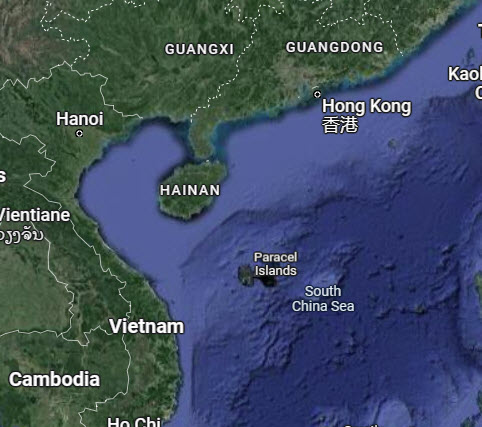 , Cambodia, and Siam — and a rival of the PadroadoThe administration of the Catholic Church of the Spanish Crown being carried out via the Philippines and with its intention to fight the hegemony of the Portuguese in the region. As a result, the rivalry created also a fight between the religious orders: Jesuit, Franciscan, Augustinian and Dominican. The former were firmly settled in Macau and in Japan and strongly resisted the penetration of the others with their base in the Philippines5.
, Cambodia, and Siam — and a rival of the PadroadoThe administration of the Catholic Church of the Spanish Crown being carried out via the Philippines and with its intention to fight the hegemony of the Portuguese in the region. As a result, the rivalry created also a fight between the religious orders: Jesuit, Franciscan, Augustinian and Dominican. The former were firmly settled in Macau and in Japan and strongly resisted the penetration of the others with their base in the Philippines5.
Thus, from the very beginning the commercial community of Macau became an important centre of general politics, a base for religious expansion disputed by two antagonistic national interests (Portuguese and the Spanish) and by the rivalry of their religious orders6.
Commercially it was at the crossroads of economic interests connected with the largest market in the Orient (China) and the most sought-after source of silver (Japan). It was an indispensable port for Portuguese route from India and Malacca to China and Japan, needed to secure the regular provision of silk bought at the Canton Trade Fair, to ensure that voyages to Japan could proceed regularly and to provide logistical and technical support for voyages in both directions7.
With the termination of trade with Japan in 1639 and the rise of the commercial and naval power of the Dutch in the oriental seas, the Portuguese merchants had to make some adjustments to their commercial routes. In the 1630s in particular, Macau's trade flourished mainly in three regions: Macassar, Manila and Vietnam (
TonkinA term for the northern region of Vietnam and Cochinchina)8.
With the cessation of trade between Portugal and Japan, trade with the southern ports assumed greater importance. The route Makassar-Flores-Solor-Timor, although under intense pressure from the Dutch, became the object for lucrative trade in products such as sandalwood and spices9.
Between the years 1665 and 1682, the Portuguese and Chinese merchants of Macau developed trade in blue and white porcelain manufactured in Yaoping, in the northeast of Guangdong, with Batavia (Java).
Towards the end of the decade of 1660, the Chinese authorities of the Qing dynasty gave orders to their coastal population to move inland, due to the attacks of KoxingaA Ming loyalist general who resisted the Qing conquest of China in the 17th century, fighting them on China's southeastern coast., a loyalist and a follower of the Ming10. This meant the end of Macau and in 1664, the Captain-GeneralCaptain of the Crown's fleet and army with complete control of the settlement's administration and public institutions. Manuel Coelho da Silva asked D. Afonso VI to send an embassy to Pekingto negotiate the status of Macau11.
In 1667, the ambassador Manuel Saldanha arrived in Macau to prepare an embassy to travel to Peking (via Canton, as it was usual and in accordance with Chinese protocol)12.
In 1669, with the expulsion of
Koxinga and his retreat to Formosa (whence the Dutch had been expelled in 1662), the Chinese authorities removed the imposition for the populations to move inland. The embassy of Saldanha arrived in Peking in 1670 but, although being well received, it had no practical effect. The same occurred in 1678, with the diplomatic mission of Bento Pereira de Faria, who brought a lion as a gift to the Emperor, which was much appreciated13.
According to Subrahmanyan, the objective of these embassies was not only to secure the Macau's privileges but also to assure the Dutch embassy (1666-1668) would not succeed14.
Notably, in this regard, similar to the diplomacy towards Cambodia, Vietnam and Siam, the Portuguese in Macau had a reasonable degree of autonomy from Goa.
In 1685, the Emperor K'ang Hsi published an imperial decree that opened the port of Canton to foreigners, at least once a year, during the annual fair15.
Thus, Macau lost its role as the exclusive commercial inter-port and the Portuguese were no longer the sole intermediaries in the China Trade.
However, its commercial activities were still to continue, to other regions, as the independent merchants of Macau sought new markets and new products.
2 - Pero Vaz de Siqueira
biographyRef: Leonor de Seabra A Embaixada ao Sião de Pero Vaz de Siqueira (1684-1686)
Pero Vaz de Siqueira was born in Macau, fidalgo-cavalheironobleman and a knight, son of Gonçalo Siqueira de Sousa, captain-of-sea-and-war. Gonçalo Siqueira de Sousa was born in Portugal and in 1614 participated in a fleet to transport Spanish troops from Cadiz to Manila, under the command of his father Rui Gonçalves de Sequeira (previously captain of the Maluku Islands from 1598 to 1603)16. This is explained by the fact that Portugal at the time, was under the dominion of the Philippines.
Following the death of his father in 1619, Gonçalo returned to Portugal and as a reward for his services, was nominated captain of the galleon Misericórdia, leaving Lisbon for Goa in 1621, but unable to arrive there due to a typhoon. From then on, he was to complete several voyages, always as a captain, thus gaining profound knowledge of the seas, not only those occidental waters but also those in the orient17.
In 1644, Gonçalo de Siqueira de Sousa was appointed ambassador to Japan, this embassy had been suggested two years earlier by Fr. Antonio Cardim, General Procurator of the Jesuit Province of Japan, with the objective of attempting to re-open the Japanese trade which had been terminated in 1639, following the expulsion of the Portuguese18.
This was the first embassy sent to that country by a European country, but the Shogun Tokugawa lemitsu continued to oppose the opening of trade with the Portuguese.
Pero Vaz de Siqueira accompanied his father on this mission to Japan (1644-47), but returned to Goa in 1648. Following the death of Gonçalo de Sousa in 1649, it is thought he returned to the Kingdom. From 1657 to 1669 he served in the Fleet of Estado da Índia (State of India), and was involved in the conquest of
CoulãoIndian port in the coast of Malabar and in the defence of
Cochin(Kochi) a city in the state of Kerala in Southern India (in 1657 and 1663).
His career in India came to an end when, in
Muscat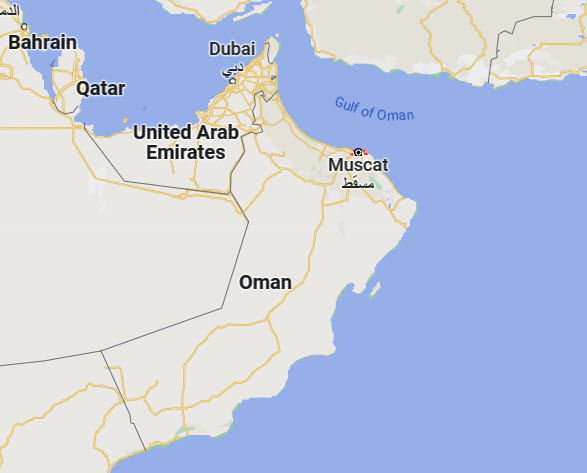 , he was appointed to the functions of Crown Fleet captain. He arrived in Macau at the beginning of the 1670s, where he settled and married Ana Maria de Noronha, a member of a prominent local society family and rich merchants19. She was the sister of Dona Catarina de Noronha who was the daughter of Dom António Manuel de Noronha, governor of Macau
between 1630 and 1636, and she married a rich merchant, Francisco Vieira de Figueiredo, a major owner of ships20.
, he was appointed to the functions of Crown Fleet captain. He arrived in Macau at the beginning of the 1670s, where he settled and married Ana Maria de Noronha, a member of a prominent local society family and rich merchants19. She was the sister of Dona Catarina de Noronha who was the daughter of Dom António Manuel de Noronha, governor of Macau
between 1630 and 1636, and she married a rich merchant, Francisco Vieira de Figueiredo, a major owner of ships20.
Francisco Vieira exercised the functions of Captain-General of South Seas with judicial and administrative powers over all the existing Portuguese communities in the Orient of Malacca, with the exception of Macau. Following the conquest of Malacca by the Dutch in 1641, he transported the Portuguese community in his fleet to Makassar which then became an important commercial and economical interconnecting port. Vieira traded not only in Macau, Cambodia and Siam but also in Timor, Solar and even Manila21.
In 1660, the Portuguese were expelled from Makassar by the Dutch and once more, the ships of Francisco Figueiredo were used to transport the Portuguese, not only to Macau and Timor but also to Siam and other localities. However the 10 to 12 richest men [Portuguese?] remained in Makassar, including Francisco Vieira de Figueiredo, under the protection of the king, Sultan Hassan Udin22.
In 1661, Figueiredo went to Goa and, on his return to Timor, he stopped in Macau where he married Dona Catarina de Noronha, who then accompanied her husband to Makassar. In February 1665, Figueiredo left permanently with his wife Dona Catarina de Noronha to
Larantuka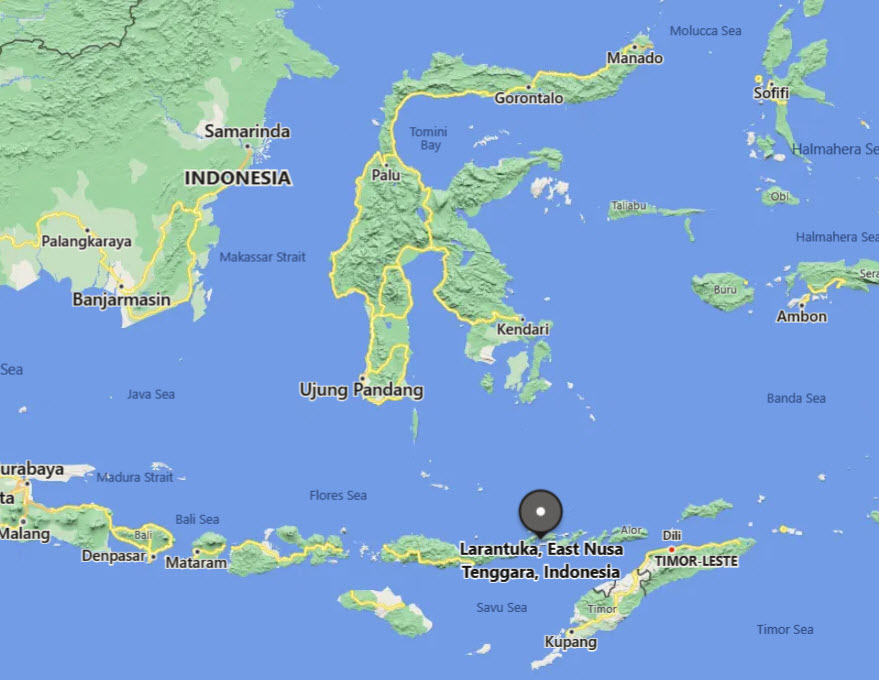 , in the Flores Island near the islands of Solor and Timor. He died in this place, from where his widow was then able to complete the husband's business at hand23.
, in the Flores Island near the islands of Solor and Timor. He died in this place, from where his widow was then able to complete the husband's business at hand23.
Dona Catarina returned to Macau in 1670 in her ship Nossa Senhora de Rosário e Almas do Purgatorio, and kept the business flowing for a number of years. She died in Macau in 1701 as confirmed by letter from Fr. Miguel do Amaral, S.J., Procurator General of the Province of Japan who certified receiving such news from the Executor of her Will, Pero Vaz de Siqueira, and about the proceeds left to the Church by the said lady on her death24.
She was "a lady with substantial means" as one would find out from the correspondence between the ambassador to China in Canton, Manuel de Saldanha and the Leal Senado as well as those with the Captain-General of Macau Dom Alvaro da Silva. In addition, the ambassador even ordered the Senado to send a ship to bring Dona Catarina home from Larantuka "this being a good deed for the city which would very much help the King's services with her means ( .... )25.
Bryan de Souza says that "her direct participation and the active role she carried out as shipowner were unique for a woman in Macau"26.
Between the years 1660 and 1680, Macau traded with Siam and the ships of the Siamese Crown which sometimes used Macau where they acquired provisions, cargo and hired sailors. The reimbursement of the loan provided by King Phra Narai of Siam to the Senado of Macau in 1669 - at the latter's request, to defray the expenses of the embassy of Manuel de Saldanha to the Emperor of China, since he was "exhausted of sources" - was made in the course of direct trade between Macau and Ayuthia. From the decade of 1690, the Portuguese in Macau reimbursed this loan to the Siamese Crown through direct customs duties payable by the Siamese Crown ships in Canton and replacing those dues with goods such as silk which they placed on board on their route Canton-Macau-Ayuthia. Finally, in 1722 the last instalment of this loan was paid27.
Pero Vaz de Siqueira, at the end of the 1670s and throughout the 1680s, sent his ships to trade with
Banjarmasina city in South Kalimantan, Indonesia, Timor, Batavia and Siam. Around 1683 the Crown and the Senado of Macau selected some
casadosmarried men to manage embassies of some countries in Southeast Asia, with an intention of bettering their commercial relations. It was thus that, in 1684, Pero Vaz de Siqueira was sent from Macau to Siam by the Viceroy of India, Dom Francisco de Tavera, 1st Count of Alvor, on a mission with purely commercial objectives, that seems not to have received the support of the Siamese King, Phra Narai, since the aims of the residents of Macau — who intended to participate in maritime trade with Japan through the Siamese Crown — could have jeopardized Siamese commerce with Japan. In addition, the influence of the French in the Orient was growing, via the Foreign Missions of Paris, which had the support of Propaganda Fide. In Siam, the minister of King Phra Narai, Constantino Falcão had some sympathy for them, but the intervention of Apostolic Vicar of Siam, Mons. Louis Laneau of the Foreign Missions of Paris, assisted by the connivance of some Portuguese residents in Siam, frustrated the efforts of Pero Vaz de Siqueira who then returned to Macau28.
In 1685 the residents of Macau saved the lives of some
japõesJapanese who were shipwrecked and took the opportunity to send to Japan a ship with those Japanese and simultaneously trying to reactivate commerce with that country. There were no ships available in the port of Macau, except for Pero Vaz de Siqueira's ship S. Paulo which had just returned from a diplomatic mission to Siam and was preparing to depart for Manila; Pero Vaz de Siqueira offered his ship and even prepared to pay for part (3/4) of the cost of the voyage, with the remaining amount to be paid by the Father Procurator of the Province of Japan. The Portuguese, like the previous embassy, were not allowed to disembark in Nagasaki and were told to return to their port of departure, with the warning "do not contemplate sending another ship from the government of Macau ... " as your lives have been spared only because you have brought back the dozen Japanese29.
Pero Vaz de Siqueira continued to develop his businesses with the ship Rosário, of which he was the proprietor, also the ship S. Paulo and the frigate Conceicão, for voyages to Manila, Siam and other ports throughout the South China Sea. In 1687 a letter arrived from the Viceroy Dom Rodrigo da Costa to him saying: "In one of the letters you justified to HM about the voyages of your frigate to Manila and of the carrack of your sister-in-law to Timor and because Count of Alvor had understood that the ships would be protected ...30.
Towards the end of 17th century there were in Macau only twenty four
homens-bonsgood men/respectable gentlemen and from those, only fifteen of value, although only seven of these could be considered for government positions in the City; there were only five ship owners and among them those ships of Pero Vaz de Siqueira and his sister-in-law Dona Catarina de Noronha31.
Throughout the 1690s and early 1700, Pero Vaz de Siqueira was the largest individual shipowner of the City, making voyages to Goa and other Indian ports, Acheh, Benjarmassim, Timor and Manila.
In 1702, as the situation in Timor was very precarious, and as that was the source of sandalwood whose trade was essential for the survival of Macau, the boat Boas Novas was contracted to save that territory; Pero Vaz de Siqueira also sent his boat S. Paulo to accompany it32.
Besides his commercial activities, Pero Vaz de Sequeira was known to be a member of Leal Senado from 1689 to 1698 and in 1693-1694 was also a member of the Board of the
Casa da MisericordiaHouse of Mercy which undertook charitable works in Macau. From 1698 to 1700 he was appointed Captain-General of Macau by the Viceroy of India and again from 1702-1703. He died in Macau in the last year of his governorship (1703)33.
Pero Vaz de Siqueira was a significant figure in Macanese society, not only economically but also politically.
In those times the independent Portuguese traders (the
casadosmarried men, the Church and the Crown administrators) were involved in maritime inter-Asiatic commerce in the Indian Ocean and the South China Sea. Both the administrators of the Crown (who did not have the support of the Crown Treasury in this type of commerce) and well as the Jesuits, could own ships or engage as investors in the ships of the
casadosmarried men and those of independent traders. Although others (Church and Crown administrators) could also participate, it was the
casadosmarried men who made the largest investments in the Asiatic inter-regional maritime commerce and, in Macau, everyone was involved, directly or indirectly, in these highly lucrative activities34.
When the captain-general was appointed from among the
casadosmarried men of Macau who already held positions in the employment of the Crown, the Crown administrator could then become the largest shipowner of Macau, as was the case of Pero Vaz de Siqueira at the end of the 17th century.
Bibliography
BOXER, Charles Boxer, Dutch Merchants and Mariners in Asia (1602-1795), London, Variorum Reprints, 1988.
BOXER, Charles Boxer, Francisco Vieira de Figueiredo e os Portugueses em Macassar e Timor na época da Restauração, Macau, Escola Tipográfica do Orfanato Salesiano, 1940.
BOXER, Charles, Francisco Vieira de Figueiredo: a Portuguese merchant-adventurer in South East Asia (1662-1667), Gravenhage, Martinus Nijhoff, 1967.
EMBAIXADA de Portugal ao Japão em 1647: relação Inédita anotada por C. R. Boxer, Macau, Imprensa Limitada, 1928.
GUNN, Geoffrey, Ao Encontro de Macau: uma Cidade-Estado na Periferia da China (1557-1999), Macau, CTMCDP/Fundação Macau, 1998.
LEITÃO, Ana Maria, "Os Portugueses e o termo das relações comerciais com o Japão: tentativas de reaproximação e substituição", in O Século Cristão do Japão, Actas do Colóquio Internacional comemorativo dos 450 anos de Amizade Portugal-Japão (1543-1993), dir. de Roberto Carneiro e Artur Teodoro de Matos, Lisboa, 1994.
LOBATO; Manuel, Política e Comércio dos Portugueses na Insulíndia: Malaca e as Molucas de 1575 a 1605, Macau, Instituto Português do Oriente, 1999.
OLIVEIRA, Fernando Correia de , 500 anos de Contactos Luso-Chineses, Lisboa, Público/Fundação Oriente, 1998.
PIRES, Benjamim Videira, A Vida Marítima de Macau no Século XVIII, Macau, ICM/Museu Marítimo, 1993.
SOUZA,George Bryan, A Sobrevivênciua do Império: Os Portugueses na China (1630-1754), Lisboa, Publicações D. Quixote, 1991.
SEABRA, Leonor Diaz de, A Embaixada ao Sião de Pero Vaz de Siqueira(1684-1686), Macau, Universidade de Macau, 2003.
SEABRA, Leonor de Diaz, Relações entre Macau e o Sião (Séculos XVIII-XIX), Macau, Universidade de Macau, 2014.
SILVA, Beatriz Basto da, Cronologia da História de Macau (Séculos XVI-XVII), Macau, Direcção dos Serviços de Educação, 1992.
SOUZA, George Bryan, A Sobrevivência do Império: Os Portugueses na China (1630-1754), Lisboa, Publicações D. Quixote, 1991.
SUBRAHMANYAM, Sanjay, O Império Asiático Português, 1500-1700: Uma História Política e Económica, Lisboa, DIFEL, 1995.
TEIXEIRA, Manuel, Marinheiros Ilustres Relacionados com Macau, Macau, Centro de Estudos Marítimos, 1988.
TEIXEIRA, Manuel, Vultos Marcantes em Macau, Macau, Direcção dos Serviços de Educação e Cultura, 1982.
Printed Works
Arquivos de Macau, 3ª Série, Vol. I, Nº 1, Fevereiro de 1964, pp. 19-20. A.M., 3ª Série, Vol. I, Nº 3, Abril de 1964, pp. 201- 215.
Manuscripts
ARQUIVO HISTÓRICO DE GOA:
Arch. Vol. 1265 - Correspondência de Macau (1682-1689), Livro 2. Arch. Vol 1210 - Embaixada à China, 1669.
Arch. Vol. 58 - Monções do Reino, vol. nº 51 A. BIBLIOTECA DA AJUDA:
Jesuítas na Ásia, Códice 49-V-24.
| Leonor Diaz de Seabra, PhD | | Maria de Deus Manso, PhD |
| University of Macau | | University of Évora |
References
Click on  to be taken back
to be taken back
1 Leonor de Seabra,
A embaixada ao Sião de Pero Vaz de Siqueira (1684-1686), Macau, Uni of Macau, 2003, p 24.

2 Charles Boxer,
Fidalgos no Extrema Oriente (1580-1710), Macau, Fundação Oriente/Centro de Estudos Maritimos, 1990, pp 26-29 and 43-44.

3 Leonor Diaz de Seabra, op. cit. p 24.

4 Leonor Diaz de Seabra, op. cit. p 25 .

5 Charles Boxer,
A Igreja e a Expansão Ibérica (1440-1770), Lisbon, Edições 70, 1990, pp 98-99.

6 Geoffrey Gunn,
Ao Encontro de Macau, Uma Cidade-Estado na Periferia de China (1557-1999), Macau CTMCDP/Fundação Macau, 1998, pp 44-46.

7 Manuel Lobato,
Política e Comércio dos Portugueses na Insulindia: Malaca e as Molucas de 1575 a 1605, Macau, Institute Português do Oriente, 1999, pp 255-267.

8 Benjamim Videira Pires,
A Vida Marítima de Macau no Seculo XVIII, Macau, ICM/Museu Marítimo, 1993, p 13.

9 Benjamim Videira Pires, op. pp 14-29.

10 Beatriz Basto da Silva,
Cronologia de História de Macau (Seculos XVI-XVII), Macau, Dir. Serv., Educ. de Macau, 1992, pp 143-136.

11 Manuel Teixeira,
Macau no seculo XVII, Macau, Dir. Sera. Educ. e Cultura, 1982, p 106.

12 Fernando Correia de Oliveira,
500 anos de Contactos Luso-Chineses, Lisboa, Publico/ Fundação Oriente, 1998, pp 67-75.

13 Charles Boxer,
Dutch Merchants and Mariners in Asia (1602-1795), London, Various Reprints, 1998, pp 30-46.

14 Sanjay Subrahmanyan,
O lmpério Asiático Português 1500-1700, Uma História Política e Económica, Lisboa, DIFEL, 1995, p 298.

15 Beatriz Basto da Silva
Cronologia oe História de Macau (Seculos XVI-XVII), Macau, Dir. Serv. Educ. de Macau, 1992, p 140.

16 Manuel Teixeira,
Marinheiros Ilustres da História de Macau (Seculos XVI-XVII), Macau, Dir. Serv. Educ. de Macau, 1992, p 140.

17 Manuel Teixeira,
Vultos Mercantes em Macau, Dir. Serv. Ed. e Cultura, 1992, pp 65-66.

18 Embaixada de Portugal ao Japão em 1647; relação heredite anotada por C.R. Boxer, Macau, lmprensa Limitada, 1928, pp 5-15.

19 George Bryan Souza,
A sobrevivência do imperio: os Portugueses na China (1630-1754), Lisbon, Publicacoes D. Quixote, p 62.

20 Charles Boxer,
Estudos para a História de Macau (Seculos XVI-XVIII}, 1st vol., Lisbon, Fundação Oriente, 1991, pp 222-223.

21 Charles Boxer,
Francisco Vieira de Figueiredo: A Portuguese Merchant Adventurer in South East Asia (1624-1667), Gravenhage, Martinus Nijhoff, 1967, pp 48-49.

22 Charles Boxer, Francisco de Figueiredo e os Portugueses de Makassar e Timor na epoce da Resteumcso, Macau, Escola Tipoqrafica do Orfanato Salesiano, 1940, pp 1-8.
23 Ibid.
24 Jesuítas na Asia, Cadice 49-V-24, de 23 Junho de 1701, fl. 9.

25 AHG, Arch. Vol. 1210, Embaixada a China 1669, fly 44-50. Leonor de Seabra, A Embaixada ao Sião de Pero Vaz de Siqueira (1684-1686), Macau, Uni. Macau, 2003.

26 George Bryan Souza, op. cit. p 52.

27 Leonor Diaz de Seabra,
Relações entre Macau e Sião XVIII-XIX, Macau, Uni Macau, 1999 pg 8.

28 AHG, Arch. Vol 58 - Monções do Reino, vol no. 51 A. See Leonor Diaz de Sabra, A Embaixada ao Sião de Pero Vaz de Siqueira (1684-1886), Macau, Uni. of Macau, 2003.

29 Ana Maria Leitão, Os Portugueses e o termo das Relações Comerciais com o Jepso: Tentativas de Reaproximação e Substituição, in O seculo Cristão do Japão, Actas do Colóquio Internacional Comemorativo dos 450 anos de Amizade Portugal-Japão (1543-1993). dir Roberto Garneiro e Artur Teodoro de Matos, Lisboa, 1994, p 228.

30 AHG, Arch. Vol 1265 - Correspondencie de Macau, Livro 2 (1682-1689).

31 Benjamim Videira Pires,
A Vida Marítima de Macau no Seculo XVIII, Macau, ICM/Museu Marítimo, 1993, pp 11-14.

32 Arquivos de Macau, 3rd series, Vol I, no. I, February 1964, pp 19-20.

 ,
Makassar
,
Makassar The capital of the Indonesian province of South Sulawesi,
Flores
The capital of the Indonesian province of South Sulawesi,
Flores A group of islands in Indonesia,
SolorA group of islands in Indonesia
A group of islands in Indonesia,
SolorA group of islands in Indonesia  and
Timor
and
Timor , in the south and, via
Goa
, in the south and, via
Goa , to Africa and Europe; and from Europe to the eastern coast of Central and South America including Brazil. It was through all these links that a global maritime commerce began to take shape in what could be considered the first step to globalisation.
, to Africa and Europe; and from Europe to the eastern coast of Central and South America including Brazil. It was through all these links that a global maritime commerce began to take shape in what could be considered the first step to globalisation. 




